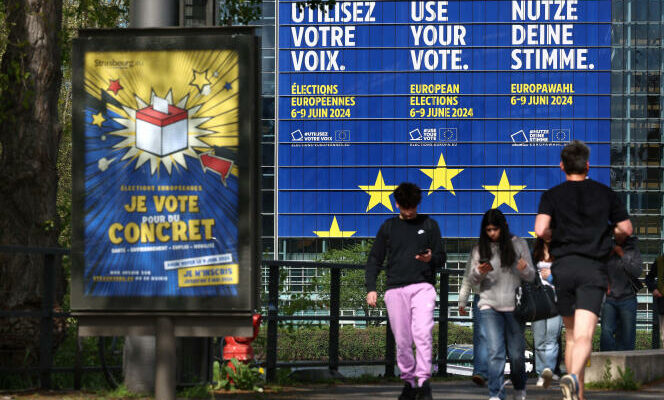Lhe evolution of voting intentions in an electoral campaign traditionally depends on two factors. On the one hand, the scores can change when the campaign accelerates and voters who did not think about voting at the start of the campaign finally decide to mobilize. Under these conditions, the electorate grows following the influx of these new voters, and the previously observed balance of power is likely to change.
On this first point, less than six weeks before the European Parliament elections, it is clear that the campaign is not really getting off the ground, at least in the way it is perceived by the French, according to the fourth wave of the survey. electoral campaign carried out by Ipsos, in partnership with Cevipof, the Montaigne Institute, the Jean Jaurès Foundation and The world, conducted from April 19 to 24. At the beginning of March, only 56% of them said they were interested in the vote, and this figure has barely changed in the space of a month (57%).
Quite logically, this absence of interest dynamics is reflected in the intention to participate in the vote: over the same period, the certainty of going to vote increased from 44% to 45%. Electoral abstention, which therefore promises to be significant, is already a phenomenon in itself, which comes “hustle” the stability of Western democracies.
Women more hesitant
If the electorate therefore remains relatively similar between now and June 9, electoral dynamics can only be achieved thanks to the second factor capable of generating changes in voting intentions: transfers of votes from one candidate to another . At this level, the electoral choice is in fact still far from being crystallized: 63% of voters say they are certain of their choice of ballot, a figure which has not changed in six weeks.
Moreover, these hesitations are an increasingly structuring phenomenon in democracies marked by a decline in partisan attachment and strong electoral volatility: during the first round of the 2022 presidential election, a quarter of voters said they hesitated in their choice of vote, until the last moment.
But, precisely, who are these voters who are, at present, unsure of their choice? If more than a third of those who are certain to vote are still hesitant about the candidate, socio-demographic factors play a major role in this indecision. Women are much more hesitant than men (42% of female voters consider that their choice is not final, compared to 32% of male voters). And age also plays a major role: if 43% of those under 35 consider that their choice can still evolve, this figure increases to 38% among those aged 35-59 and to 33% among those aged 60 and over.
You have 57.59% of this article left to read. The rest is reserved for subscribers.
